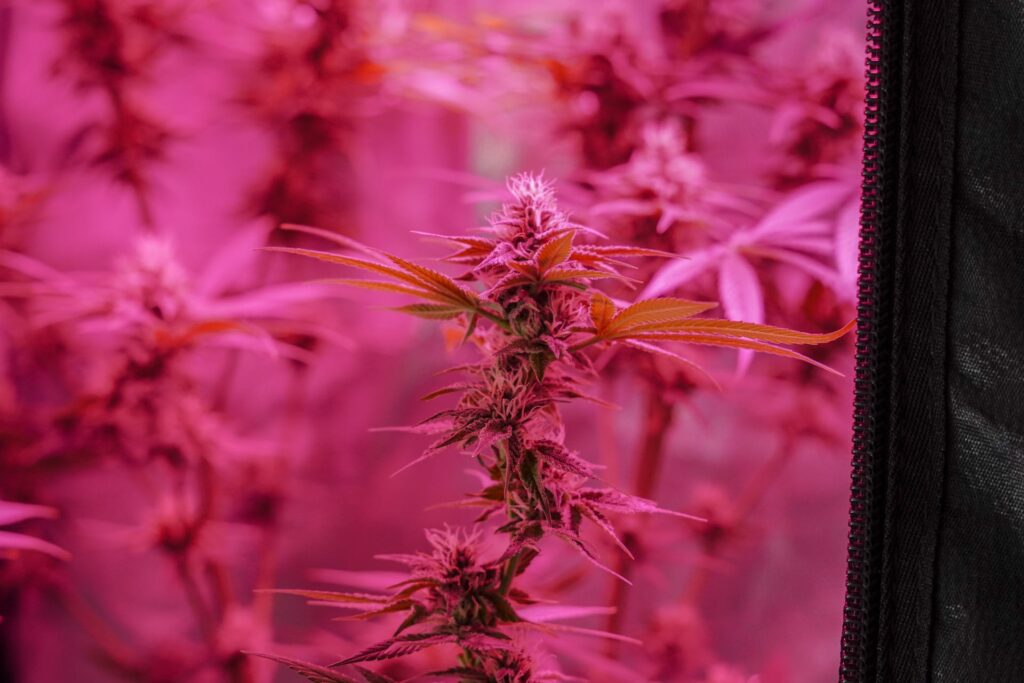Skyrocketing THC Potency Shakes Cannabis Industry
In the ever-evolving landscape of the cannabis industry, the surge in THC potency has sent shockwaves throughout the market. Like a meteor streaking across the night sky, this phenomenon has ignited concerns among consumers and professionals alike.
As the main psychoactive compound in cannabis, THC potency has become a crucial consideration for adult-use consumers seeking a tailored experience. However, it is imperative to remember that THC is just one piece of the puzzle.
Join us as we delve into the complexities surrounding skyrocketing THC potency and its implications in the cannabis industry.
THC potency: Key Takeaways
– THC potency in cannabis has significantly increased over the years, with levels now surpassing 20% in some cases.
– Regional variations in THC potency exist, with Canada reporting an increase from an average of 3% in the 1980s to around 15% today.
– The potency of illicit cannabis has consistently increased since the 1990s, with THC levels rising from about 4% in 1995 to about 12% in 2014.
– Genetically modified cannabis strains have the potential to produce THC levels higher than 30%, raising concerns about potential harm and ethical implications.
Historical Trends: Rising THC Levels in Cannabis
The historical trends in THC potency in cannabis reveal a significant increase over the years, with average levels skyrocketing from 4% in the 1980s to over 20% today. This evolution of cannabis strains has had a profound impact on the cannabis market.
The increasing potency of THC has attracted a growing consumer base seeking more intense psychoactive effects. This has led to a shift in consumer preferences and purchasing behavior, with individuals seeking out higher potency products.
The demand for high THC strains has also influenced the cultivation practices within the industry, as growers focus on breeding and developing strains with elevated THC levels.
Additionally, the rise in THC levels has prompted regulatory discussions and debates surrounding the potential risks and public health implications associated with consuming highly potent cannabis products.
Regional Variations: Impact on THC Potency
Analyzing regional variations in THC potency provides valuable insights into the impact of geographical factors on cannabis cultivation and the resulting levels of psychoactive compounds. Understanding the impact of these factors is crucial for both producers and consumers in the cannabis industry. Here are three key points to consider:
1. Impact on regional markets:
– Different regions have unique climates and growing conditions that can affect THC potency.
– Factors such as temperature, humidity, and soil composition can influence the growth and development of cannabis plants, ultimately impacting THC levels.
– Regional variations in THC levels can lead to differences in consumer preferences and market demand, shaping the cannabis industry on a local and global scale.
2. THC potency and cannabis cultivation:
– THC potency is a key consideration for cannabis cultivators, as it directly affects the quality and marketability of their products.
– Cultivators may employ specific techniques, such as selective breeding or genetic modification, to enhance THC potency in their strains.
– Understanding regional variations in THC potency can help cultivators optimize their cultivation methods to meet market demands and consumer preferences.
3. Implications for consumers:
– Consumers rely on THC levels as an indicator of the psychoactive effects they can expect from a cannabis product.
– Regional variations in THC can influence the consumer experience, as different levels of THC may result in varying degrees of intoxication or desired effects.
– Awareness of regional variations in THC allows consumers to make informed decisions when selecting cannabis products that align with their preferences and desired effects.
The Role of Genetics: Genetically Modified Cannabis and THC Levels
Considering the potential implications and risks, exploring genetically modified cannabis strains and their impact on THC levels can provide valuable insights into the future of the cannabis industry.
Genetically modified cannabis strains have the potential to produce higher levels of THC, potentially exceeding 30%. This raises ethical concerns regarding the potential harm of high THC levels on the human body and the environment.
The use of GMO technology in cannabis cultivation could improve resource efficiency and cultivation practices, but it also raises questions about the manipulation of nature for profit.
Additionally, the environmental impact of genetically modified cannabis strains on ecosystems and biodiversity needs to be thoroughly examined.
Understanding the ethical implications and environmental impact of genetically modified cannabis strains is crucial for the responsible development and regulation of the industry.

Consumer Demand: The Influence of High THC Potency
Highlighting the growing significance of high THC potency, consumer demand for cannabis products with elevated levels of the psychoactive compound is reshaping the industry. This trend is driven by several factors, including the impact of high THC potency on cannabis consumers and the market demand for high THC potency products.
– The impact of high THC levels on cannabis consumers: High THC can lead to more intense psychoactive effects, including increased euphoria and altered perception. However, it can also increase the risk of negative side effects such as anxiety and paranoia. Consumers seeking a stronger and more potent experience are driving the demand for high THC potency products.
– The market demand for high THC products: With the increasing acceptance and legalization of cannabis, there is a growing market demand for products with high THC levels. This demand is fueled by both recreational users looking for a more potent experience and medical users seeking higher levels of THC for therapeutic purposes.
As a result, cannabis producers and manufacturers are responding to this demand by developing and marketing products with higher THC levels. However, it is crucial to balance consumer preferences with responsible use and education to ensure the safe and enjoyable consumption of high THC potency products.
Industry Challenges: Standardizing THC Potency Measurements
A significant challenge facing the cannabis industry is the lack of a standardized method for measuring THC, hindering accurate and consistent quantification of the psychoactive compound in cannabis products.
Standardization efforts are essential to ensure consumer safety, product quality, and regulatory compliance. Currently, measurement techniques vary across laboratories and regions, leading to inconsistencies in reported THC levels. This lack of standardization not only creates confusion for consumers but also poses challenges for researchers, policymakers, and industry stakeholders.
To address this issue, industry organizations, regulatory bodies, and scientific communities are working towards establishing uniform protocols and guidelines for measuring THC potency. These standardization efforts aim to improve the reliability and reproducibility of THC measurements, enabling more accurate product labeling and dosage recommendations.
Implementing standardized measurement techniques will not only enhance consumer confidence but also foster transparency and accountability within the cannabis industry.
Health and Safety Concerns: High THC and Its Implications
Unquestionably, the high THC levels of cannabis raises significant health and safety concerns that cannot be ignored. The implications of high potency on public health are numerous and warrant careful consideration.
– Increased psychoactive effects: High THC levels can lead to more intense psychoactive effects, increasing the risk of adverse reactions such as anxiety, paranoia, and psychosis.
– Higher addiction potential: THC is known to be addictive, and higher potency cannabis may increase the likelihood of developing a cannabis use disorder.
– Impaired cognitive function: Chronic use of high THC cannabis has been linked to cognitive impairments, particularly in memory and attention.
– Impacts on mental health: High THC potency has been associated with an increased risk of mental health disorders, including depression and schizophrenia.
The impact of high THC potency on cannabis regulation and policy is also significant. Regulators must consider implementing measures to address these health and safety concerns. This may include setting limits on THC potency in cannabis products, requiring clear labeling and warnings, and promoting education on responsible use. Striking a balance between consumer demand and public health considerations is crucial in developing effective regulations.
Final Thoughts on THC Levels
In conclusion, the skyrocketing potency of THC in the cannabis industry has caused significant disruption and raised concerns among consumers and industry professionals.
The historical trends, regional variations, and role of genetics in THC levels have all played a part in this phenomenon. The demand for high THC potency among consumers has further fueled this trend.
However, the lack of standardized measurement methods poses challenges for the industry. Health and safety concerns also arise with the increasing potency of THC.
Overall, this issue requires careful consideration and regulation to ensure a safe and consistent consumer experience.


